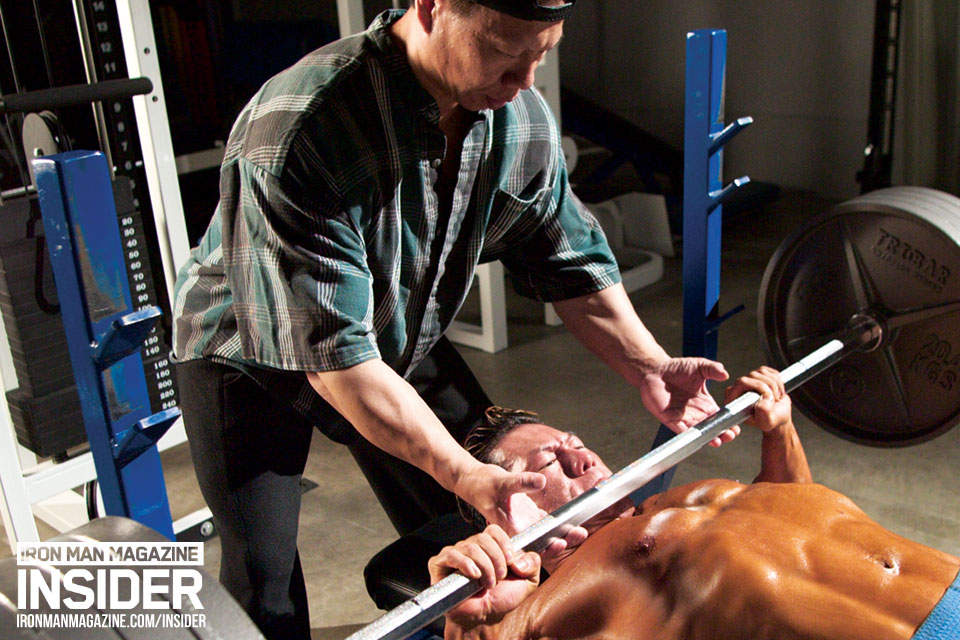


No more excuses about traveling and training. With this workout protocol, you can actually gain muscle and improve your endurance and energy systems.
Be assured: Once you’ve finished this article, you will never again have to worry about losing your hard-earned gains while you travel. Not having access to a gym or a lot of training equipment will no longer be a reason to miss a workout while you’re on the road.
To design training protocols for your travels, focus on four primary elements. Minimal Equipment: Your workouts can, in fact, be completed with the use of body weight and either a pair of dumbbells or a single kettlebell. Time Efficiency: Your workouts can be effective and efficient and can be completed in less than 45 minutes, including a five- to 10-minute warm-up. Intensity: Your workouts should be flat-out hard. You won’t stand around much, you will sweat, and you should feel uncomfortable. A relatively short session means you have to train with an all-out mindset. Total Body: Your workouts have to hit the entire body and primary muscle groups. Emphasize multi-joint exercises, and take a balanced attack approach by selecting a battery of exercises that work opposing muscle groups for both the upper and lower body.
Minimal Equipment: As counterintuitive as this may sound, some of my best workouts have taken place on the road with only the use of my bodyweight and a single “tool,” such as one kettlebell. What makes this maximally effective, though, is the weight/load you choose. Select a load with which you can move well and nonstop. In other words, this load should be challenging, but it shouldn’t be so challenging that you break your form for any given upper-body or lower-body exercise. Along these lines, you should be able to train proficiently with this load for at least 30 seconds without stopping.
Time Efficiency: Travel often means you’re on vacation or at work, and no one necessarily wants or needs training time to interfere with the other main objectives and purposes of the trip. Accordingly, here are three different and highly effective high-intensity interval training (HIIT) work/rest templates. Use the option that suits you and you will leave feeling badass after a fast and furious training session. Do 30 seconds of nonstop work with 10 seconds of passive rest, or 45 seconds of nonstop work with 15 seconds of passive rest, or 60 seconds of nonstop work with 20 seconds of passive rest.
You can create your own unique timer in your phone (e.g., using “Seconds Pro”), and mix and match the three different work/rest templates above. Make sure to prepare mentally for “sprint-type” work, which means you will push your physical capacity to go all-out for the designated work interval and train yourself to recover as quickly as possible during the corresponding passive rest interval. In terms of total time to complete a workout, including a warm-up that’s best for you, you should be in it to win it and completely done after no more than 45 minutes.
Intensity: Simply put, go hard and then go home! From personal experience, a 45-minute workout that includes a warm-up and minimal rest between exercises means the time you spend actually working should be less than 30 minutes. This is a perfect amount of time that allows you to work extremely hard and come out of the workout feeling challenged and accomplished. Remember, make it your number one priority to lift nonstop during your work intervals. Slight pausing is perfectly acceptable. Ideally, you would never set down your weight(s) during a work interval; you will recover as quickly as possible during your very brief rest periods, and you will be ready to rock ‘n’ roll at the very beginning of every work interval.
Total Body: The three other main elements of “Grow on the Go Workouts” are founded upon exercise selection. To sum it up, here’s what you will aim for: Multi-Joint Exercises: squats, deadlifts, lunges, RDL’s, swings, high pulls, shoulder presses, chest presses, push-ups, rows, upright rows, and the like; Balance and Variation: Most often, you should select six to 12 different exercises, including upper body/lower body and opposing (agonist/antagonist) muscle groups;
Head to Toe: Select two to four exercises that are non-resistance based. These can be viewed as “cardio” and/or active recovery exercises and include: stair running, jumping rope, jumping jacks, mountain climbers, bodyweight squat jumps, split squat jumps, burpees, sprints/high knees, planks/bridging or abs.
ON THE ROAD TO GROWTH
Now, wherever you go, your gains come with you! Plan ahead by writing up a few different training protocols, pack your supplements and shaker bottles, and bring your equipment and workout clothes. Then, find an open space—whether it be an open field, your hotel room or even the hotel fitness center—focus your mind, and do what we do best. Get the job done!






















You must be logged in to post a comment Login